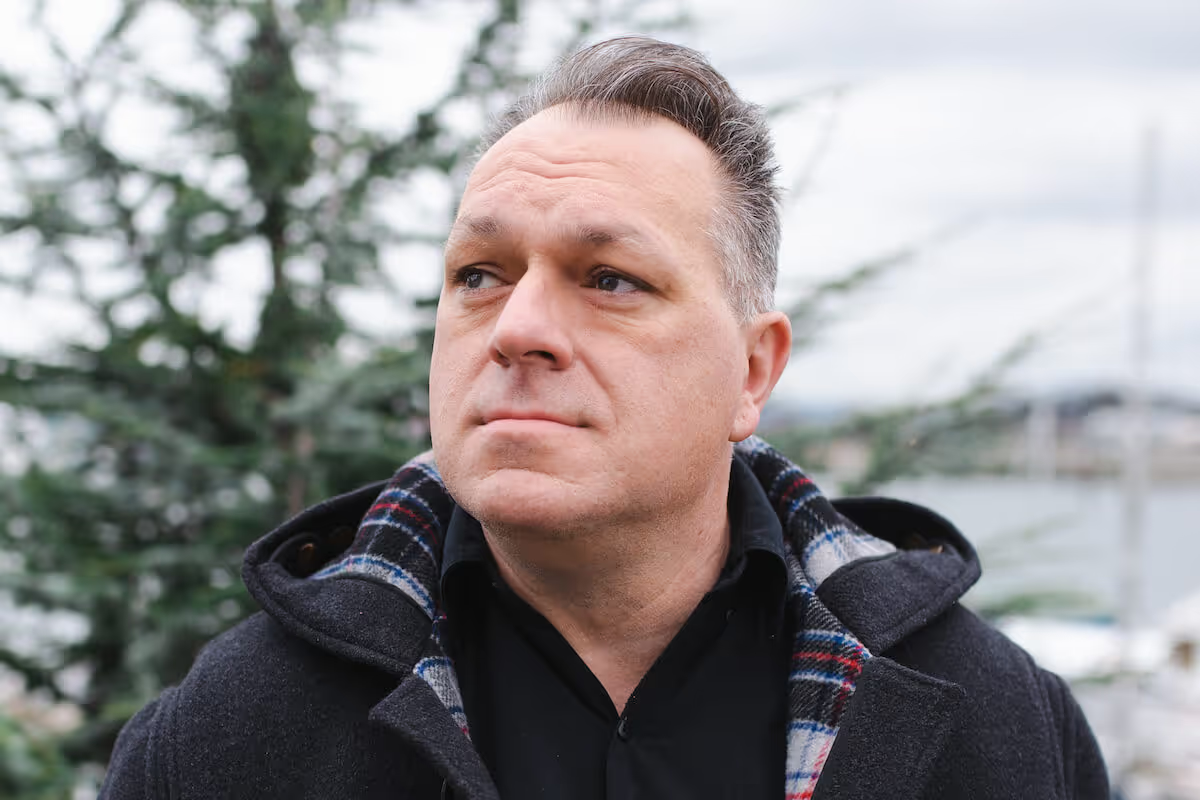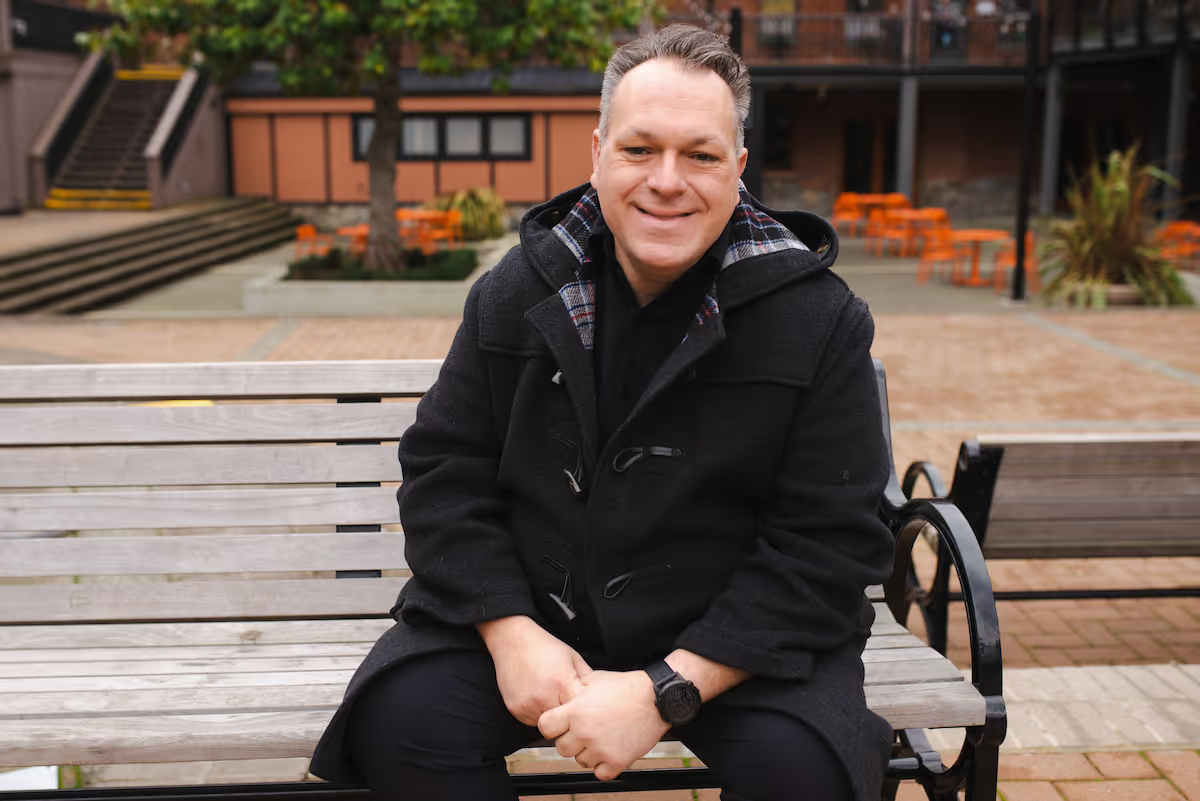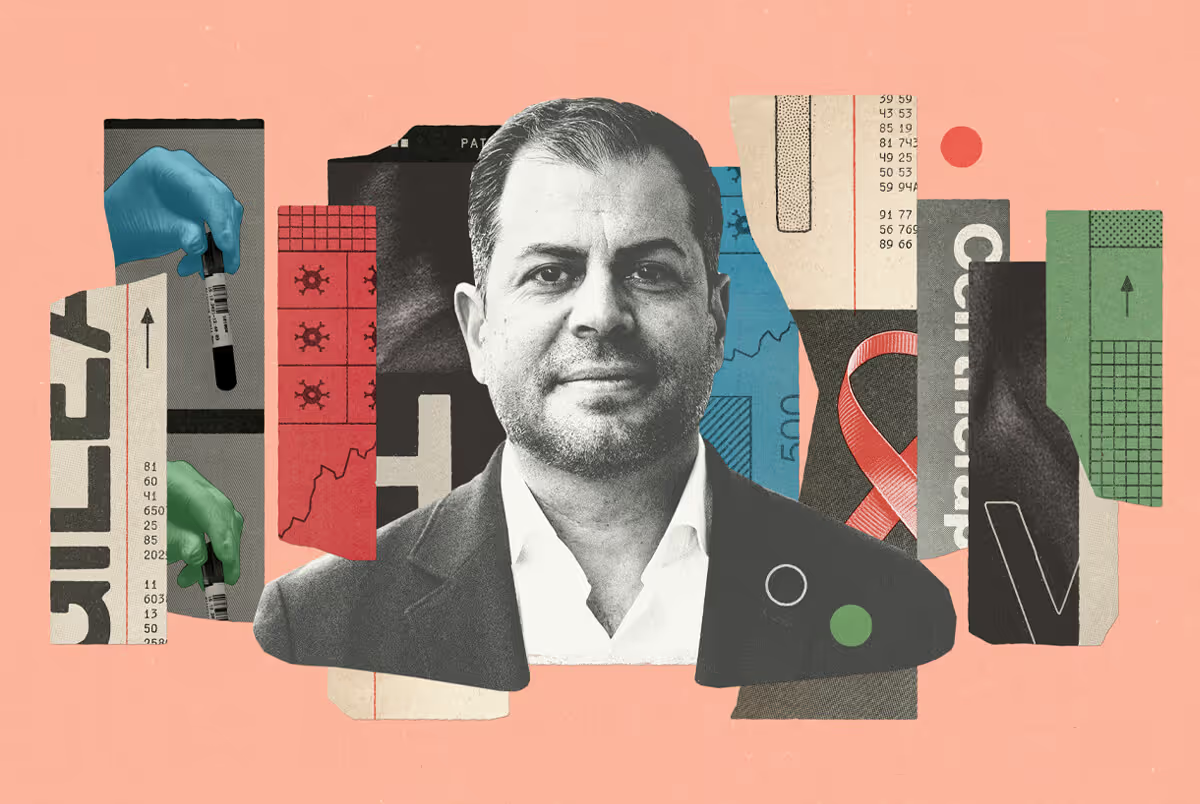
Ian Gibbs was diagnosed with ankylosing spondylitis (AS), an inflammatory disease of the spine, when he was 10 years old. But what was worse than the diagnosis was that the disease masked a much rarer and dangerous condition — one that took nearly two decades to diagnose.
Ian, a Victoria-based podcaster and author, has spent the better part of his life struggling with health-related issues. Although AS caused him joint pain and stiffness and impaired his mobility, the disease would periodically go into remission. Ian was still able to work for a local volunteer police force and pen numerous novels.
So when he began experiencing a new set of unusual symptoms in the early 2000s, he chalked them up to AS. But, in the back of his mind, he also wondered if it could be something else.
In reality, Ian was suffering from acromegaly, a rare condition in which the body produces too much growth hormone due to a benign tumour in the pituitary gland. But before he ever learned his diagnosis, he would have to endure over 17 years of seemingly disconnected and debilitating symptoms, endless doctor and dentist visits, bouts of anxiety, and his marriage breakdown. “No one was looking at the big picture — they were just looking at each symptom,” says Ian. “And doctors typically only treat the pieces of the puzzle they understand.”
Unfortunately, stories like Ian’s are common for those with rare conditions. Many visit specialist after specialist, searching for a proper diagnosis, for years.

Years of struggling in silence
For Ian, the first new and unusual symptom appeared when his now 23-year-old son was in the fifth grade. “I woke up choking one night and didn’t know why,” he says. Another time, after experiencing some pain in his chest, Ian went to the ER and found out he had an enlarged heart valve and high blood pressure.
In addition to his sleep issues, Ian’s hands and feet began to enlarge. So did his jaw. His blood sugar levels also soared, putting him at risk for diabetes.
Yet no one knew what was wrong with him. An ear, nose, and throat specialist didn’t see any abnormalities with Ian’s throat. His family doctor, suspecting an adrenal tumour, ran tests, but everything came back normal. A rheumatologist also had no answers.
“I started to feel worse and worse — I really thought, ‘I’m not going to see 50,‘” says Ian, now 49. Over the next decade, he gradually lost mobility and became less able to work. His personal relationships suffered. He was taking six pills a day to treat his high blood pressure, blood sugar, reflux, and heart condition, when he realized he was having trouble breathing and speaking. “I was on the verge of giving up,” he says.
Distraught, Ian visited his mother, a retired nurse, in Alberta. She finally put the puzzle pieces together: “I think you have acromegaly,” she said.
“I googled it right there on her couch,” says Ian. And everything fell into place. Within weeks he had his growth hormone levels tested, confirming the diagnosis.
Fast forward two years and Ian is now on the appropriate treatment. His tumour has shrunk, his blood pressure and blood sugar are in the normal range, and his jaw has decreased in size. He’s begun a new chapter in his life, complete with a new partner. “It has really been the best thing,” he says of his diagnosis.

The battle for proper care
While Zoe Gibbons’ path to a rare disease diagnosis has been quicker than Ian’s, her and her family’s struggle has been equally daunting.
Two-year-old Zoe is one of 49 people worldwide who have SLC35A2-CDG (CDG Type IIM), part of a group of rare genetic, metabolic disorders. CDG can lead to abnormal fat distribution, blood clotting issues, vision problems, muscle pain, mobility issues, and brain abnormalities.
The first clues of a serious medical issue were in the days following Zoe’s birth. While doctors remarked upon the baby’s high forehead and floppy muscle tone, Sarah-Lynne — Zoe’s mother — says she was in denial. But as time went on and Zoe failed to thrive, it became undeniable, even to Sarah-Lynne, that something was wrong.
“It was a nightmare,” says Sarah-Lynne. “We had two-year-old twins at home. So while I stayed in the hospital with Zoe, my husband, Erik, watched the boys.” Erik eventually had to take leave from work to be at home with Sarah-Lynne, the boys, and Zoe.

Later, Zoe underwent whole exome sequencing in an attempt to confirm a definitive diagnosis. “It took seven months to get the results,” says Sarah-Lynne. “We felt so helpless waiting for answers. The day we got the call was our darkest day.”
Doctors weren’t aligned on Zoe’s prognosis. “She might walk — but might not; she might not talk — but she could,” says Sarah-Lynne. “There was relief in being able to put a name to the disease, but we were quickly left to fend for ourselves.” Now, over two years later, ‘Little Miss Zoe,’ a lively, smiley little girl, still requires around-the-clock care.
Sarah-Lynne’s biggest frustrations remain tied to the incredible rarity of Zoe’s condition. Without a disease-specific community or grant programs, the family has had to pay for much of Zoe’s treatment out of pocket, illustrating that the challenges faced by rare disease parents don’t simply end once a diagnosis is confirmed.
“I’m going to do everything I can to help Zoe until she says she can’t do something,” says Sarah-Lynne. “Or until my line of credit runs out.”
Dire need for broader education, accessible testing
Diagnostically-speaking, stories like Ian’s and Zoe’s shouldn’t be happening, says Durhane Wong-Rieger, President and CEO of the Canadian Organization for Rare Disorders (CORD). “The capacity to diagnose far exceeds what we’re doing in Canada,” she says.
Canada has the ability to do sophisticated genomic testing, allowing for better treatments, says Wong-Rieger. Yet, the health care system isn’t using this type of testing to its advantage. It’s also not utilizing tools that can help in the diagnosis of rare diseases, such as software programs that harness AI to pinpoint what specific symptoms might indicate the presence of a rare disease. She says that these types of programs need to be funded more aggressively, made more available to physicians, and supported through accurate data.

Wong-Rieger says there’s also a need for increased awareness among family physicians, pediatricians, and specialists, of what symptoms might constitute a rare disease — and the availability of prompt and accessible genetic testing in identifying that disease. “It’s really the physicians who need to know. We don’t do enough of that education,” she says.
Additionally, Wong-Rieger believes newborn screening needs to be expanded in Canada, as does access to genomic sequencing and genetic counselling. “There’s so much that you can do at birth, and early on, for these patients,” she says. “Rare diagnoses often slip through the cracks, and the window of opportunity for slowing the progression of the disease is simply being missed.”
As for Ian, he’s just happy that he can finally address the underlying issue that’s been plaguing him for so many years. He gets regular MRIs now to monitor the tumour and has a nurse visit him monthly to administer medication.
“I’m grateful for my diagnosis,” he says. “I’m finally building a new foundation for my life.”
Ian Gibbs is an active member of Acromegaly Canada, a national community of acromegaly patients and caregivers committed to raising awareness of acromegaly and gigantism through education, while providing a network of support. To connect with us on Facebook, click here.
The Canadian Organization for Rare Disorders (CORD) is Canada’s national network for organizations representing all those with rare disorders. Shortening the pathway to diagnosis has always been, and will continue to be, at the core of our mission. To learn more, or to join our community, click here.
Connect with us:
Facebook: @RareDisorders
Twitter: @raredisorders
This article is supported by Ipsen Biopharmaceuticals Canada Inc.
.avif)
%20(1).jpg)



